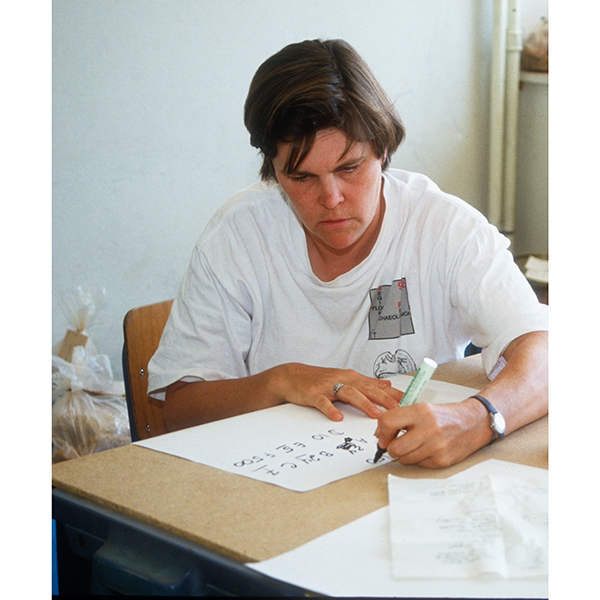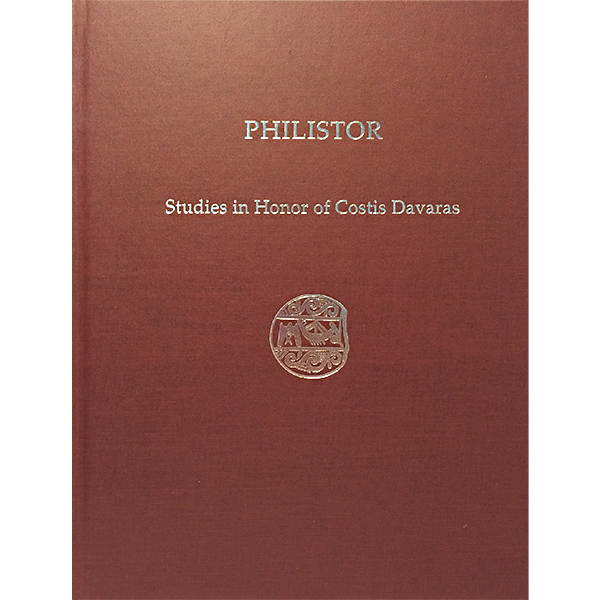Description
Ke-ra-me-ja is a woman’s name that appears on a Linear B tablet from Knossos. It means “potter” (Κεράμεια, from Greek κέραμος, “potter’s clay”) and combines two major strands of Cynthia Shelmerdine’s scholarly pursuits: Mycenaean ceramics and Linear B texts. It thereby signals her pioneering use of archaeological and textual data in a sophisticated and integrated way. The intellectual content of the essays presented to her in this volume demonstrate not only that her research has had a wide-ranging influence, but also that it is a model of scholarship to be emulated.
Contents: KE-RA-ME-JA: CERAMIC STUDIES: 1. Late Helladic I Revisited: The Kytheran Connection,Oliver Dickinson; 2. Wine, Women, and Song…The LH IIIA:2 Kylix at Petsas House, Mycenae, Kim S. Shelton; 3. Potted at the Palace: A Reanalysis of Late Helladic III Pottery from the Palace of Nestor by Inductively Coupled Plasma Mass Spectrometry, Michael L. Galaty; 4. A Very Underestimated Period: The Submycenaean Phase of Early Greek Culture, Sigrid Deger-Jalkotzy; 5. The Canaanite Transport Amphora within the Late Bronze Age Aegean: A 2013 Perspective on a Frequently Changing Picture, Jeremy B. Rutter. TA-RA-SI-JA: INDUSTRY AND CRAFT SPECIALIZATION: 6. The Emergence of Craft Specialization on the Greek Mainland, William A. Parkinson and Daniel J. Pullen; 7. Pylos Tablet Vn 130 and the Pylos Perfume Industry, Thomas G. Palaima; 8. Voicing the Loom: Women, Weaving, and Plotting, Marie-Louise Nosch; 9. Chariot Makers at Pylos, Robert Schon. I-JE-RE-JA: RELIGION AND ICONOGRAPHY: 10. The Minoan Goddess(es): Textual Evidence for Minoan Religion, Joann Gulizio and Dimitri Nakassis; 11. Beehives and Bees in Gold Signet Ring Designs, Janice L. Crowley; 12. Gifts to the Goddesses: Pylian Perfumed Olive Oil Abroad? Lisa M. Bendall; 13. Offerings for the Wanax in the Fr Tablets: Ancestor Worship and the Maintenance of Power in Mycenaean Greece, Susan Lupack; 14. “Snakes” in the Mycenaean Texts? On the Interpretation of the Linear B Term e-pe-to-i, Carlos Varias García. TI-MI-TI-JA: PYLOS AND MESSENIA: 15. The Development of the Bronze Age Funerary Landscape of Nichoria, Michael J. Boyd;16. The Varying Place of the Dead in Pylos, Joanne Murphy; 17. Working the Land: ka-ma Plots at Pylos, Stavroula Nikoloudis; 18. “Re-excavating” the Palace of Nestor: The Hora Apotheke Reorganization Project, Sharon R. Stocker and Jack L. Davis. WA-NA-KA-TE-RA: WRITING AND ADMINISTRATION: 19. The Birth of Administration and Writing in Minoan Crete: Some Thoughts on Hieroglyphics and Linear A 251, Massimo Perna; 20. Signs of Writing? Red Lustrous Wheelmade Vases and Ashkelon Amphorae, Nicolle Hirschfeld; 21. O-no! Writing and Righting Redistribution, John Bennet and Paul Halstead; 22. Two Personal Names (Dative me-to-re-i and o-po-re-i) and a Place Name (Directive me-to-re-ja-de) in Mycenaean Thebes, José L. García Ramón; 23. Considering the Population Statistics of the Sheep Listed in the East–West Corridor Archive at Knossos, Richard Firth; 24. Homer and Mycenae: 77 Years Later, Carol Thomas.
Hardback: 336 total pp., 30 tables, 97 B/W figures
(Prehistory Monographs 46, INSTAP Academic Press, 2014)
ISBN 978-1-931534-76-5

















